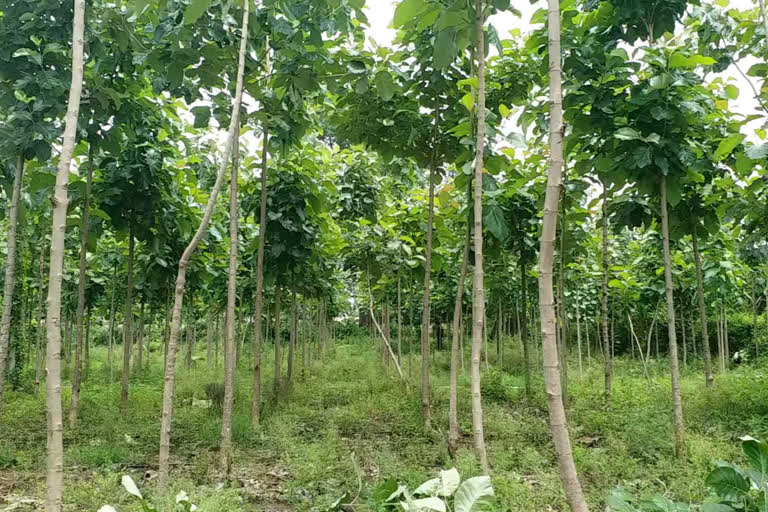Amravati: A Civil Engineer-turned-farmer from Mahuli Jagahir in the Amravati district has done an experiment of sorts by planting Brahmasaga trees in a two-and-a-half-acre field. Anant Wadokar worked on power projects as a civil engineer in Dubai for ten years before returning to his native village Mahuli Jahagir.
Anant Wadokar explains that there are four varieties of teak in total which include Wild teak, Gawran teak, Malaysian teak, and Brahmasaga teak. Wild teak takes 70 to 80 years to grow, Malaysian teak takes 22 to 25 years, Gawran teak takes 40 years, while the Brahmasaga grows in just eight to ten years. "Brahmasaga does not have many branches like other Sagas. The roots of these trees go straight down into the ground, even the flowers do not reach the Brahmasaga. Because of this, the energy flowing elsewhere in the tree is contained only in its trunk, making the trunk of Brahmasaga stronger than any of the other three teaks," he said.
He added, "the trunks of these trees are the most important part as the maximum amount of wood is obtained from the trunk only. According to experts, a single tree can fetch up to Rs 50,000. However, even if we settle for only ten thousand rupees per tree instead of fifty thousand, the profit share will be remarkable,"
Anant Wadokar also said that "I have planted a total of 1000 Brahmasaga trees on my farm, and with a calculation of 10 thousand rupees per tree, I will be making at least 1 crore rupees after ten years," he says with a glint of pride.
Also read: Punjab farmer adopts natural farming for clean environment
Saplings of these trees are prepared using tissue culture technology and one sapling costs rupees 110. A distance of 2 meters needs to be maintained between two saplings and regular trimmings also need to be done for proper growth for one and a half to two years. Trees don't need to be watered during winter and monsoon, he added.
Forest department permission is required to cut down these trees. However, if the department is informed that production of Brahmasaga is being done on a commercial basis on farms then every time no prior permissions are required. Brahmasaga wood never gets damaged by water so is used for shipbuilding. Along with this, Brahmasag is also used to make buts of guns. Apart from that, they are in high demand for furniture, he informed.
Anant Wadokar's farm at Mauli Jagir, which is 17 km away from Shri Shivaji Agriculture College in Amravati city, and the students of the agricultural college come to study Brahmasaga.



